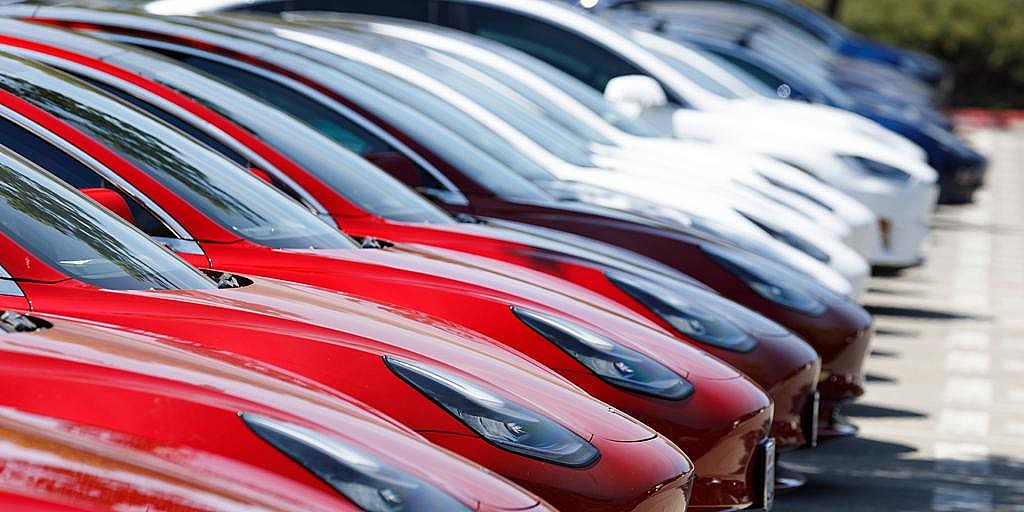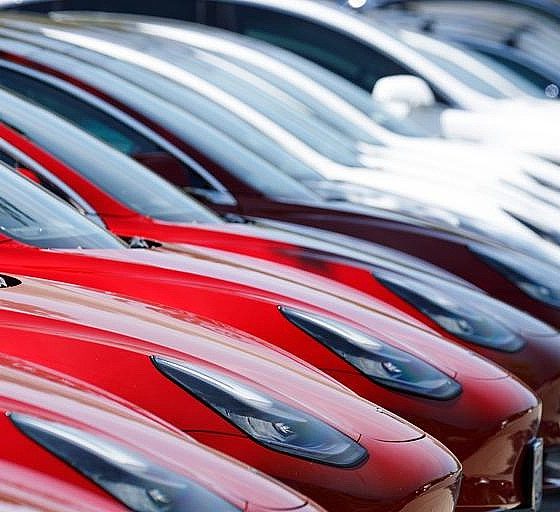The Biden Administration is pulling back on a proposed rule that would require automakers to build fewer combustion engine vehicles or face hefty fines.
On Tuesday, the Department of Energy decided to slow down the phase-out of existing rules that give car companies extra fuel-economy credits for the EVs they sell. The goal was to help U.S. car companies meet federal fuel efficiency standards while maintaining the ability to sell gas-powered pickups and SUVs that are big money makers.
The Biden White House decided to pull back the rules after meeting with automakers who said they could not meet the aggressive goals for a widespread EV transition.
The previous rules aimed to have 67 percent, or roughly two-thirds, of all new cars be electric by 2032. The new rules now allow for 30 to 56 percent of all new car sales to be EVs.
BREAKING
You might not own an electric vehicle by 2032, after all.
The EPA is *easing* its emissions rule ramp-up after major concerns from the car industry.
Percentage of EVs by 2032:
Previous plan: 67%
Current plan: 30-56%Dealers and consumers – how do you feel about…
— Car Dealership Guy (@GuyDealership) March 20, 2024
Last year, the U.S. EV market share was under 8 percent.
Tesla wants the U.S. to enact stricter fuel efficiency standards
The backpedaling comes as President Biden is attempting to bolster his re-election campaign. Reuters, in its report, points out that the move could be an attempt to sway some votes in his direction as the battleground state of Michigan, where General Motors and Ford, two legacy automakers, are based.
The Biden Administration’s concession comes as Donald Trump has stated that the heavy EV policies could cost millions of jobs and help Chinese EV makers dominate the growing U.S. EV sector.
The now-pulled-back proposal would have lowered “petroleum-equivalent fuel economy” ratings for EVs by 72 percent in 2027. By 2030, they would have been reduced by a total of 65 percent, giving companies more time to adjust to the strict standards.
Companies supported the announcement after they disclosed to the White House that meeting these standards would become increasingly difficult.
The Reuters report also states that GM would have faced $6.5 billion in fines, Stellantis would have been stuck with a $3 billion penalty, and Ford would have had $1 billion in fines.
The EPA also announced on Wednesday that it would implement revised standards for vehicle emissions from 2027 to 2032.
These new rules will require emissions reductions in every new car sold starting in 2027. To meet the new standards, automakers will be able to utilize cleaner technologies for gas-powered cars and add more zero-emissions EVs to their lineups.
The final rule would help the industry meet the limits of 56 percent of new vehicle sales being all-electric by 2032. It would also see at least 13 percent of new car sales be hybrid vehicles.
“Let me be clear: Our final rule delivers the same, if not more, pollution reduction than we set out in our proposal,” the EPA’s Michael Regan said, according to NBC.
“Today’s announcement will shift the trajectory of the automobile market and put us on a path to real emissions reductions, with an estimated 7.2 billion tons of global warming pollution avoided by 2055,” Steven Higashide, Director of the Clean Transportation Program at the Union of Concerned Scientists, said. “These rules are the strongest standards ever finalized and vital for meeting U.S. climate goals. This rule is technology-neutral and won’t mandate electric vehicles, but it will encourage this growing market. New cars sold in the coming years will be on the road for a decade or more, so it’s vital that these rules cut emissions from gasoline cars as well as encourage zero-emission electric cars.”
The new regulations are more aligned with the automotive industry’s beliefs. Dealers and the UAW saw previous plans from the EPA as unrealistic.
However, climate groups believe these standards will help eliminate emissions.
“These standards will help clean up emissions from transportation—the biggest source of global warming pollution in the U.S. To achieve their full potential, these rules must be accompanied by other investments in a cleaner, more accessible transportation system,” Higashide added.
I’d love to hear from you! If you have any comments, concerns, or questions, please email me at joey@teslarati.com. You can also reach me on Twitter @KlenderJoey, or if you have news tips, you can email us at tips@teslarati.com.

News
Tesla is improving Giga Berlin’s free “Giga Train” service for employees
With this initiative, Tesla aims to boost the number of Gigafactory Berlin employees commuting by rail while keeping the shuttle free for all riders.

Tesla will expand its factory shuttle service in Germany beginning January 4, adding direct rail trips from Berlin Ostbahnhof to Giga Berlin-Brandenburg in Grünheide.
With this initiative, Tesla aims to boost the number of Gigafactory Berlin employees commuting by rail while keeping the shuttle free for all riders.
New shuttle route
As noted in a report from rbb24, the updated service, which will start January 4, will run between the Berlin Ostbahnhof East Station and the Erkner Station at the Gigafactory Berlin complex. Tesla stated that the timetable mirrors shift changes for the facility’s employees, and similar to before, the service will be completely free. The train will offer six direct trips per day as well.
“The service includes six daily trips, which also cover our shift times. The trains will run between Berlin Ostbahnhof (with a stop at Ostkreuz) and Erkner station to the Gigafactory,” Tesla Germany stated.
Even with construction continuing at Fangschleuse and Köpenick stations, the company said the route has been optimized to maintain a predictable 35-minute travel time. The update follows earlier phases of Tesla’s “Giga Train” program, which initially connected Erkner to the factory grounds before expanding to Berlin-Lichtenberg.
Tesla pushes for majority rail commuting
Tesla began production at Grünheide in March 2022, and the factory’s workforce has since grown to around 11,500 employees, with an estimated 60% commuting from Berlin. The facility produces the Model Y, Tesla’s best-selling vehicle, for both Germany and other territories.
The company has repeatedly emphasized its goal of having more than half its staff use public transportation rather than cars, positioning the shuttle as a key part of that initiative. In keeping with the factory’s sustainability focus, Tesla continues to allow even non-employees to ride the shuttle free of charge, making it a broader mobility option for the area.
News
Tesla Model 3 and Model Y dominate China’s real-world efficiency tests
The Tesla Model 3 posted 20.8 kWh/100 km while the Model Y followed closely at 21.8 kWh/100 km.
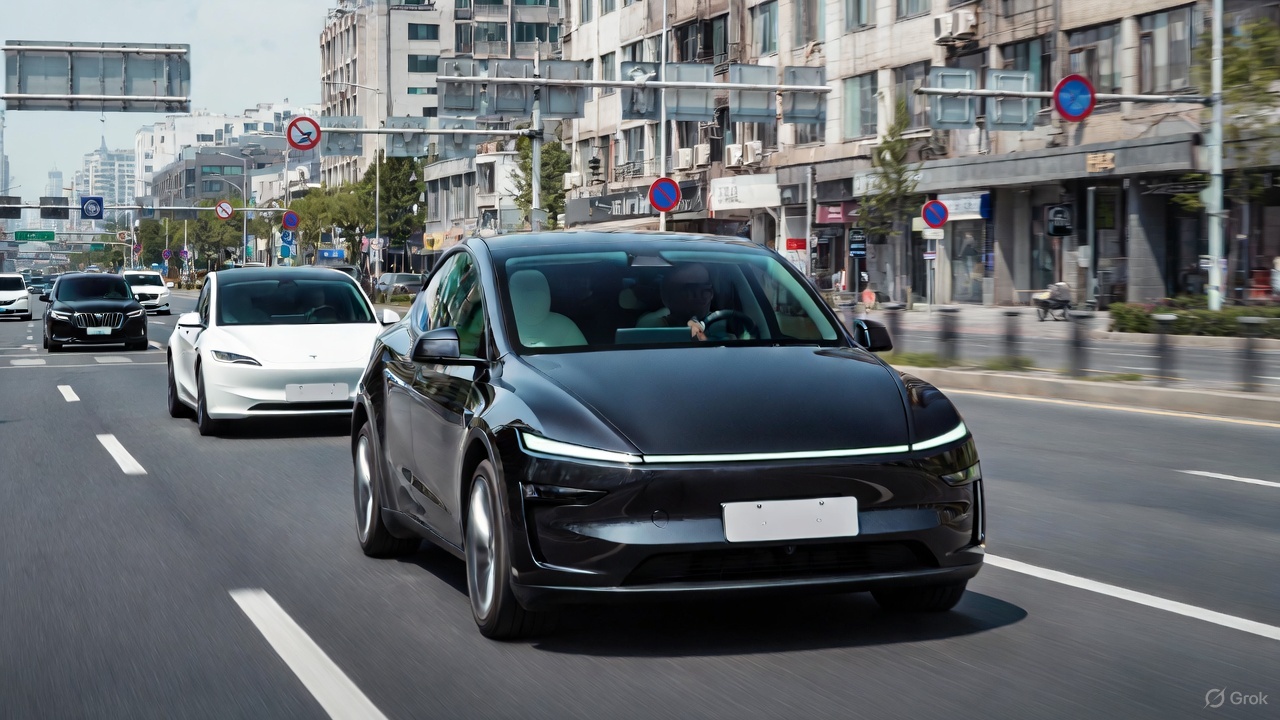
Tesla’s Model 3 and Model Y once again led the field in a new real-world energy-consumption test conducted by China’s Autohome, outperforming numerous rival electric vehicles in controlled conditions.
The results, which placed both Teslas in the top two spots, prompted Xiaomi CEO Lei Jun to acknowledge Tesla’s efficiency advantage while noting that his company’s vehicles will continue refining its own models to close the gap.
Tesla secures top efficiency results
Autohome’s evaluation placed all vehicles under identical conditions, such as a full 375-kg load, cabin temperature fixed at 24°C on automatic climate control, and a steady cruising speed of 120 km/h. In this environment, the Tesla Model 3 posted 20.8 kWh/100 km while the Model Y followed closely at 21.8 kWh/100 km, as noted in a Sina News report.
These figures positioned Tesla’s vehicles firmly at the top of the ranking and highlighted their continued leadership in long-range efficiency. The test also highlighted how drivetrain optimization, software management, and aerodynamic profiles remain key differentiators in high-speed, cold-weather scenarios where many electric cars struggle to maintain low consumption.
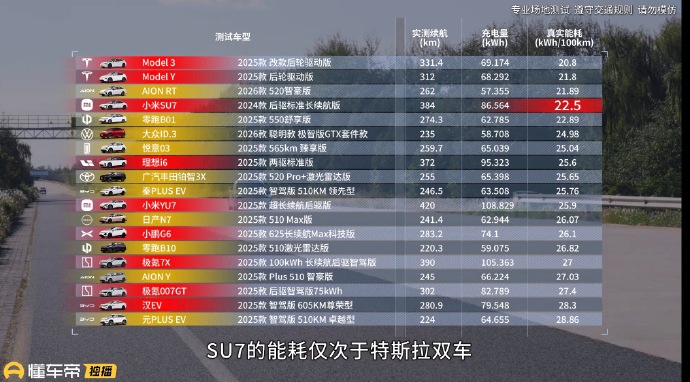
Xiaomi’s Lei Jun pledges to continue learning from Tesla
Following the results, Xiaomi CEO Lei Jun noted that the Xiaomi SU7 actually performed well overall but naturally consumed more energy due to its larger C-segment footprint and higher specification. He reiterated that factors such as size and weight contributed to the difference in real-world consumption compared to Tesla. Still, the executive noted that Xiaomi will continue to learn from the veteran EV maker.
“The Xiaomi SU7’s energy consumption performance is also very good; you can take a closer look. The fact that its test results are weaker than Tesla’s is partly due to objective reasons: the Xiaomi SU7 is a C-segment car, larger and with higher specifications, making it heavier and naturally increasing energy consumption. Of course, we will continue to learn from Tesla and further optimize its energy consumption performance!” Lei Jun wrote in a post on Weibo.
Lei Jun has repeatedly described Tesla as the global benchmark for EV efficiency, previously stating that Xiaomi may require three to five years to match its leadership. He has also been very supportive of FSD, even testing the system in the United States.
Elon Musk
Elon Musk reveals what will make Optimus’ ridiculous production targets feasible
Musk recent post suggests that Tesla has a plan to attain Optimus’ production goals.
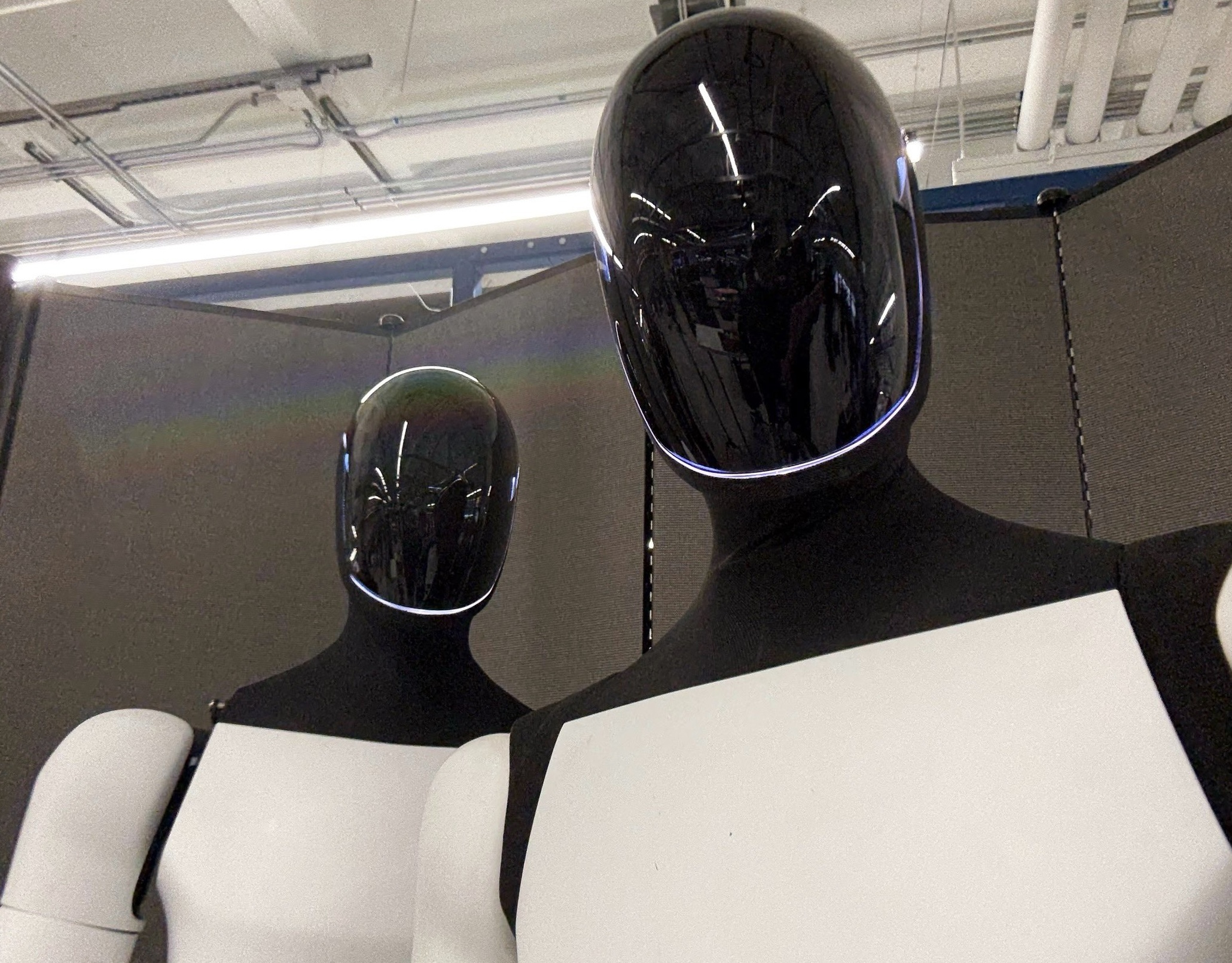
Elon Musk subtly teased Tesla’s strategy to achieve Optimus’ insane production volume targets. The CEO has shared his predictions about Optimus’ volume, and they are so ambitious that one would mistake them for science fiction.
Musk’s recent post on X, however, suggests that Tesla has a plan to attain Optimus’ production goals.
The highest volume product
Elon Musk has been pretty clear about the idea of Optimus being Tesla’s highest-volume product. During the Tesla 2025 Annual Shareholder Meeting, Musk stated that the humanoid robot will see “the fastest production ramp of any product of any large complex manufactured product ever,” starting with a one-million-per-year line at the Fremont Factory.
Following this, Musk stated that Giga Texas will receive a 10 million-per-year unit Optimus line. But even at this level, the Optimus ramp is just beginning, as the production of the humanoid robot will only accelerate from there. At some point, the CEO stated that a Mars location could even have a 100 million-unit-per-year production line, resulting in up to a billion Optimus robots being produced per year.
Self-replication is key
During the weekend, Musk posted a short message that hinted at Tesla’s Optimus strategy. “Optimus will be the Von Neumann probe,” the CEO wrote in his post. This short comment suggests that Tesla will not be relying on traditional production systems to make Optimus. The company probably won’t even hire humans to produce the humanoid robot at one point. Instead, Optimus robots could simply produce other Optimus robots, allowing them to self-replicate.
The Von Neumann is a hypothetical self-replicating spacecraft proposed by the mathematician and physicist John von Neumann in the 1940s–1950s. The hypothetical machine in the concept would be able to travel to a new star system or location, land, mine, and extract raw materials from planets, asteroids, and moons as needed, use those materials to manufacture copies of itself, and launch the new copies toward other star systems.
If Optimus could pull off this ambitious target, the humanoid robot would indeed be the highest volume product ever created. It could, as Musk predicted, really change the world.
